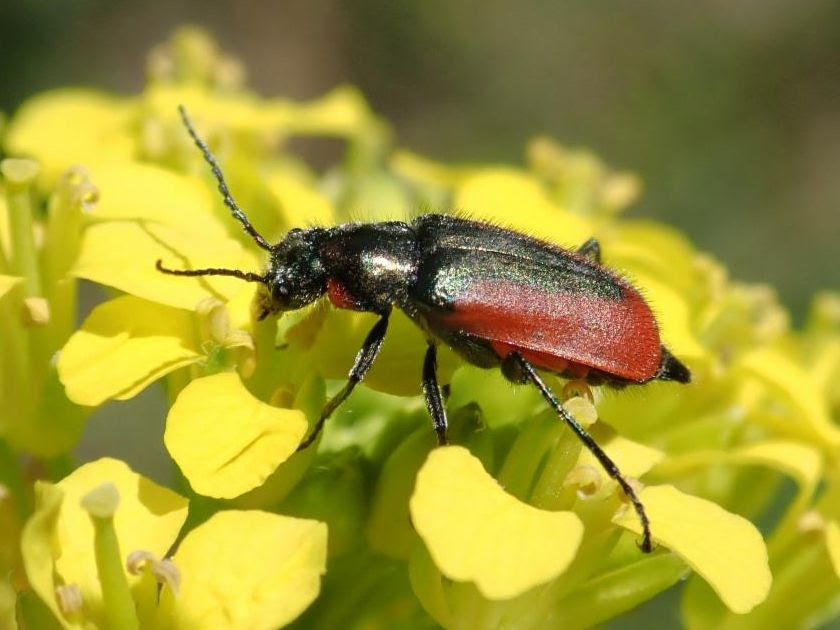It’s been another variable week for insect sightings as spring storms roll through the area. Many, like some wood boring beetles and moth species are still in their larval stage, and may not be obvious until later this summer. But just because they don’t have wings yet doesn’t mean they’re not there! Remaining inconspicuous is the name of the game when it comes to many arthropods, and finding them may require some effort on cooler days – but who among us doesn’t love a bit of a scavenger hunt?
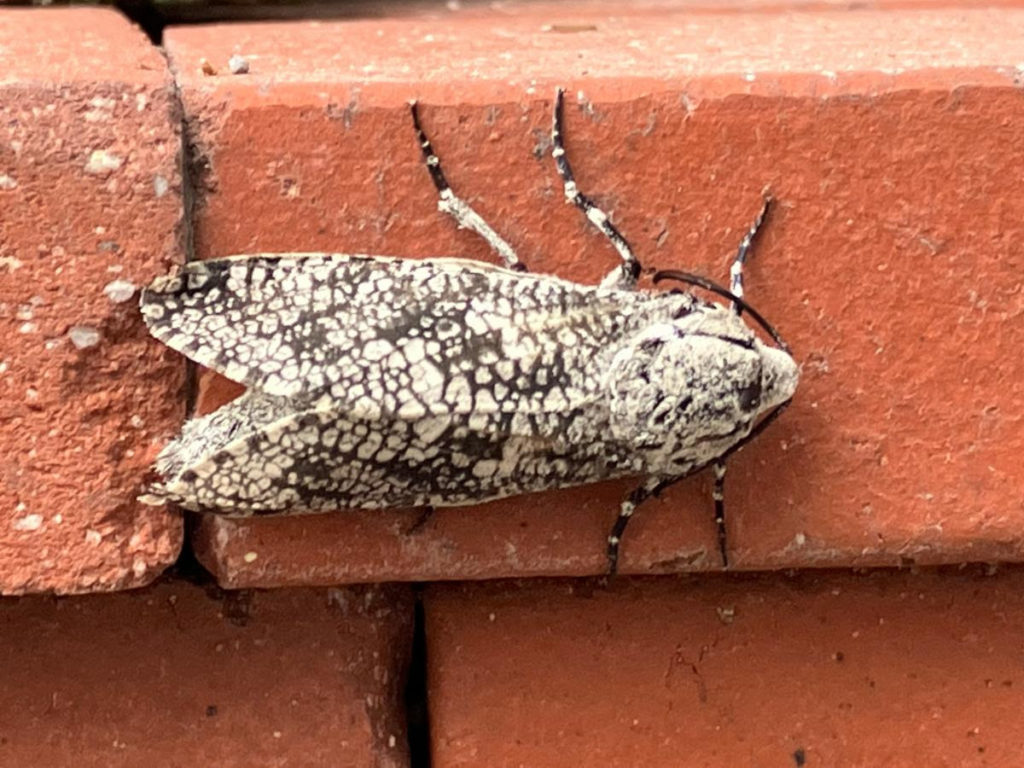
Carpenterworm Moth
Prionoxystus robiniae
These rather large moths can be found all across southern Canada and the United States. They tend to be more common in the east since their larvae bore into the wood of deciduous trees (locust, oak, chestnut, poplar, willow, maple, and ash). Unlike many moth species that get it all done in one season, carpenterworm moths take their sweet time, needing 3 to 4 years to go from egg to adult.
Dave Bell, June 5th, 2023. Missoula, MT.
Giant Salmonfly
Pteronarcys californica
With bright orange coloration behind the head and underneath the abdomen, this species of giant stonefly can grow up to 3 inches in length. They are weak, uncoordinated-looking flyers—looking like they are constantly in a controlled crash landing. They are the largest species of all mayflies, stoneflies or caddisflies hatching on any western river. Depending on the river, you can find them from mid May to mid July.
Jacinda McKinnon, June 4th, 2023. Missoula, MT.
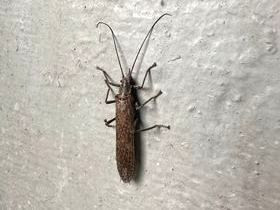
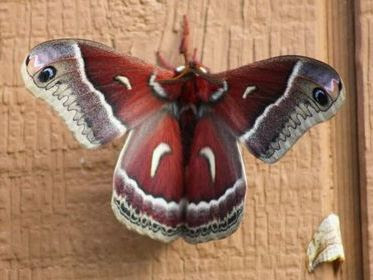
Ceanothus Silk Moth
Hyalophora euryalus
Ceanothus silk moths are found from British Columbia east to western Montana, south through Washington, western Oregon, and California to Baja California Sur. Adults do not feed, focused solely on passing their genes onto the next generation. Larvae feed on a large number of trees and shrubs, including its namesake Ceanothus. It strongly resembles the Glover’s Silkmoth (also found in Montana), which has a grayish border to the wings as opposed to the Ceanothus Silkmoth’s reddish / pink border.
Stacey Terrill, June 4th, 2023. Missoula, MT.
Common Blue Mud-Dauber
Chalybion californicum
These large (10mm – 23mm), metallic wasps may look threatening, but they are not aggressive and have no interest in stinging humans. As solitary wasps, the female is solely responsible for foraging and provisioning her young. She will find a suitable nesting spot, and lay a single egg. Oftentimes, she will scope out an abandoned nest of other mud-daubers. She will then hunt down and paralyze a prey item to feed the wasp larva that will eventually emerge. Her prey of choice? Black widow spiders.
Brenna Shea, June 3rd, 2023. Missoula, MT.
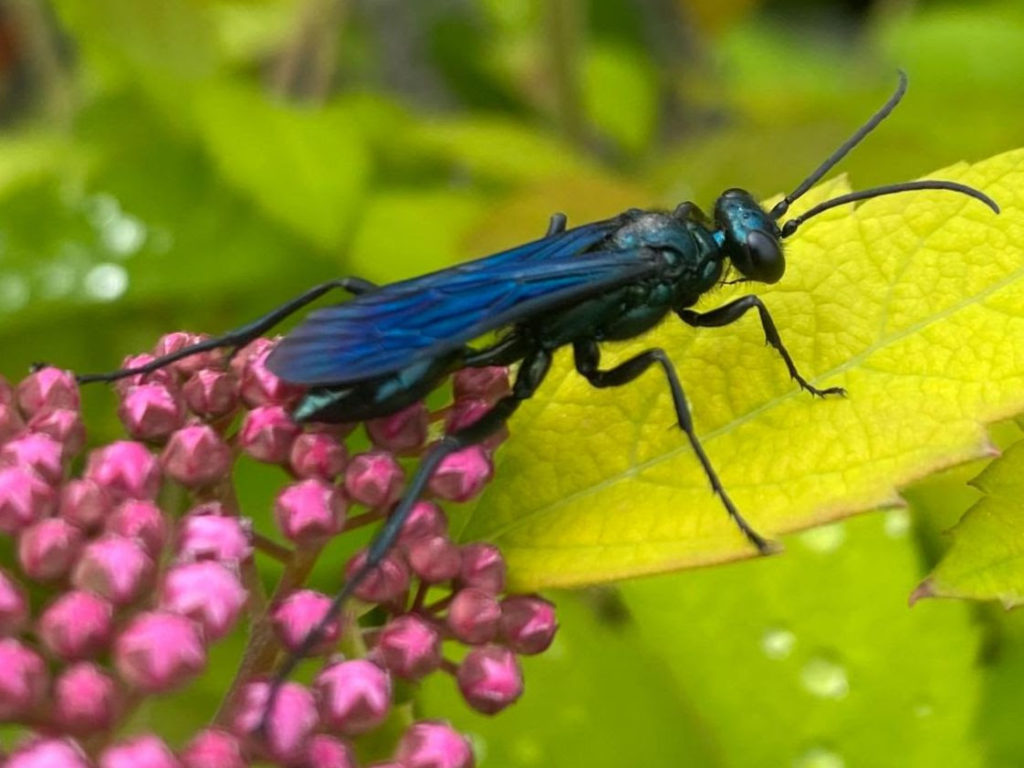
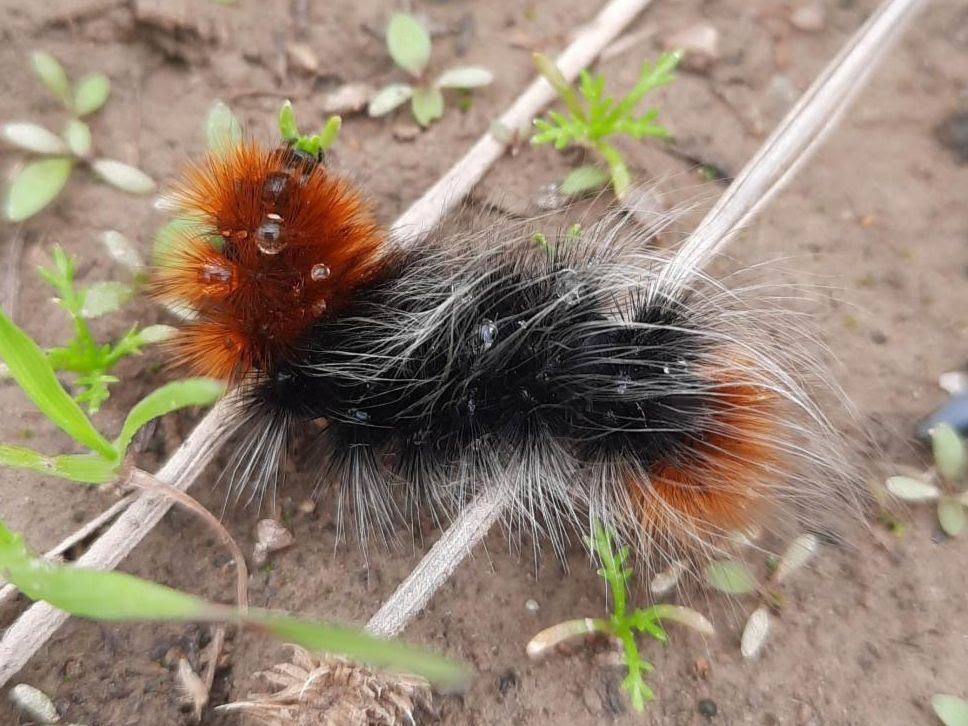
Ranchman’s Tiger Moth
Arctia virginalis
Like other tiger moth caterpillars, the Ranchman’s is densely hairy… and downright adorable. The genus name Arctia comes from a generic Greek word for bear, lending to the common term “wooly bear caterpillar.” They are not picky eaters, feeding on foliage of various herbaceous plants. We’ll start seeing the boldly marked, day-flying adults in meadows in early summer. They range across western North America and into southern British Columbia.
Kyle Hartse, May 27th, 2023. Evaro, MT.
Garden Carrion Beetles
Heterosilpha ramosa
There are only two species in the genus Heterosilpha, and only about 200 species of carrion beetles (family Silphidae) across the globe. Unlike many insect families, most of the species diversity occurs in temperate regions (as opposed to the tropics, where it is thought they are outcompeted by ants and flies). As scavengers, they feed on dead and decaying organic material – including animal carcasses (hence the common name, carrion beetles).
Ellen Knight, June 2nd, 2023. Missoula, MT.

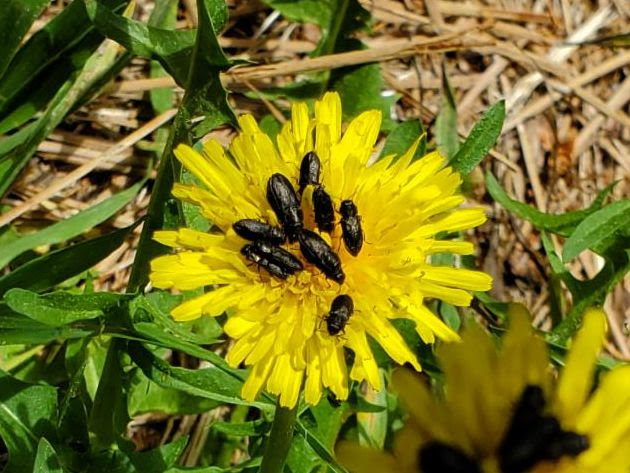
Anthaxia Beetles
Anthaxia sp.
They may not be as flashy as other members of the Buprestidae family, but these dandelion anthaxia beetles show a bit of the metallic sheen that the jewel beetles are known for. Unfortunately, this genus is poorly understood, and with about 20 species in the genus Anthaxia, identifying to species can be tricky. However, given where these beetles were found, it is very likely that they are dandelion Anthaxia beetles (Anthaxia inornata).
Ellen Knight, June 2nd, 2023. Missoula, MT.
Ponderous Woodborer Larvae
Trichocnemis spiculatus
Ponderous borers can be found in forested areas of Douglas fir and ponderosa pine (their principle hosts) throughout the Rocky Mountain region. Females lay eggs in cracks of suitable logs or stumps from trees that have recently been felled or killed by fire. The larval stage typically takes 3 to 5 years until pupation and the emergence of the adults that garner so much attention. The mature larvae have gnawing jaws that inspired the invention of the chainsaw.
Micki Long, May 31st, 2023. Missoula, MT.

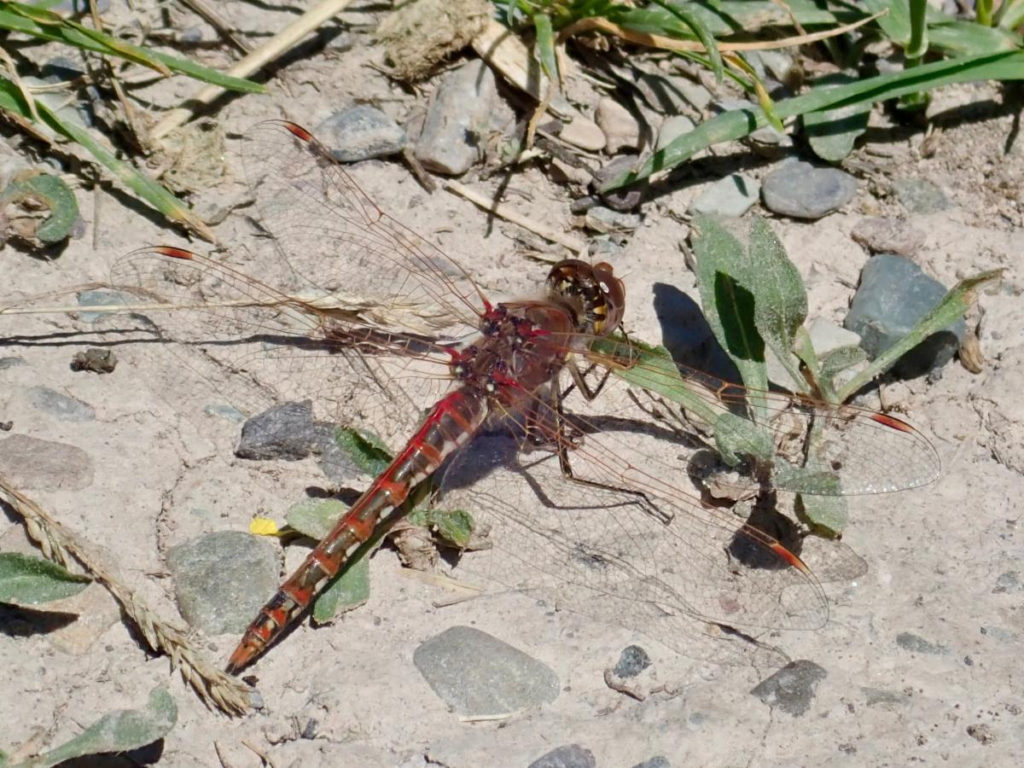
Variegated Meadowhawk
Sympetrum corruptum
Of all the species of meadowhawk dragonflies in Montana, the variegated is the most boldly patterned. With a body length of 1.5 to 2 inches, these beautiful dragonflies are often found far from water — often seen on the ground more than other meadowhawks. They tend to be most abundant in the early spring and late summer / fall months.
Brenna Shea, June 6th, 2023. Missoula, MT.
Robber Fly
Efferia sp.
Robber flies are efficient ambush predators, patiently lying in wait until they spot a suitable prey item buzzing by. Members of this genus tend to perch close to the ground, and are often at risk of being stepped on by humans – or in this case, Jeff the cat. There are over 200 species in the genus Efferia, with the highest diversity occuring in arid and semi-arid ecosystems in the western hemisphere.
Rose Marchak, June 7th, 2023. Missoula, MT.
Elm Leafminer
Fenusa ulmi
Brenna noticed a sickly-looking blight on the leaves of the elm tree in her yard, and upon closer inspection, found tiny leafminer larvae occupying the space between the outer leaf layers. Elm leafminers are a species of sawfly, a bee/wasp relative so named for the saw-like ovipositor on the females. When the leaves drop later this year, the larvae will burrow into the soil and overwinter as pupae. The adults emerge in early spring, and are capable of attacking the same tree year after year.
Brenna Shea, June 8th, 2023. Missoula, MT.
Scarlet Malachite Beetle
Malachius aeneus
M. aeneus is a widespread species of soft-winged flower beetle that was introduced to the United States in 1852. As it goes for many of our small beetles (about 5mm – 7mm), not much is known about this species, though it has been reported be a serious pest of developing wheat crops in Canada.
Brenna Shea, June 6th, 2023. Missoula, MT.
